Haymarket Square
Home to a protest movement, a bombing, and a dramatic change in labor history.
It’s sometimes said that Chicago invented the eight-hour work day, and, to some extent, it’s true.
In 1884, organized labor began petitioning for an eight-hour work day (on the reasoning that the worker would have eight-hours to sleep, eight hours to play, and eight-hours to work). Two years later, labor unions were preparing a general strike to start on May Day 1886. There were rallies throughout the nation, in New York, Milwaukee, and Detroit, but Chicago by far had the largest protests. At this time, Chicago was the center of many industries: railroads, steel, cattle, and lumber.
On May 4, 1886, the Haymarket Riot changed labor history. August Spies, a German anarchist spoke to the crowds, and during the march that ensued, an unknown person threw a bomb – a relatively regular event in the US during the years from the 1880s through the 1920s, and where the stereotype of the bomb throwing anarchist comes from – murdering policeman Mathias J. Degan. Several police officers, aside from Degan, appear to have been injured by the bomb, but most of the police casualties were caused by bullets, largely from friendly fire. Newspapers estimated at least fifty civilians died.
Eight men were tried for throwing the bomb – though there was no evidence as to who the perpetrator was. One of the eight, August Spies was tried for conspiracy, though it was clear he couldn’t have thrown the bomb. Spies and three other anarchists were convicted with no evidence, and 6 of the 8 hadn’t even been at the event at the time, while the 2 that had were on the podium in full view of thousands of people. While some businessmen felt they should be spared, Chicago’s biggest industrialist Marshall Fields felt they should be hanged, as a lesson to other anarchists. The case was a serious and total miscarriage of justice, that provoked outrage around the world, and many workers at the time believed corporate goons provoked or threw the bomb themselves. Spies and three other men were hanged by the state, and another committed suicide in prison. In 1893, the Illinois Governor pardoned the three remaining convicts.
There are remnants of the Haymarket Affair throughout Chicago. The four men killed were laid to rest in the German Waldheim Cemetery, just outside of Chicago. (In 1969, the cemetery merged with adjacent Forest Home Cemetery.) A monument on their tomb is a National Historic Landmark, and a beautiful testament to those who sacrificed their lives. Emma Goldman and other notable anarchists are also buried in this cemetery.
Immediately following the riot, the city erected a statute of a policemen on Haymarket Square - which was deliberately hit by an angry trolley driver some years later. In the 1950s, the Kennedy Expressway cut the historical Haymarket Square in half. In the 1970s the square was again the center of protests, especially during the Vietnam War. In 2004, the city built a new statute of a speakers’ wagon, like the one that Spies stood on to address the crowds, to commemorate free speech and the Haymarket rally. Mayday or International Workers’ Day is celebrated, in part, as a tribute to the anarchists and labor reformers killed after the Haymarket affair.
Today, the square, and monument within it, are located in a less developed part of the city and is mainly visited by history buffs. An American flag has been hung nearby, whether as a rebuff to the imagined “radicals” visiting the site, or as a celebration of the American adoption of the values and labor laws they were fighting for, is unknown.
Update: The Haymarket Memorial has been temporarily removed from DesPlaines Street. There is a new building being built on the lot behind where the memorial was.
Know Before You Go
Memorial has moved to Randolph and Des Plaines

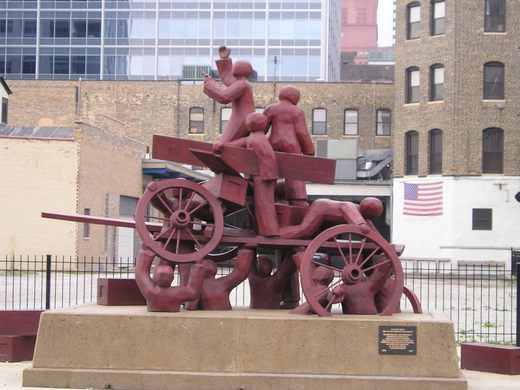
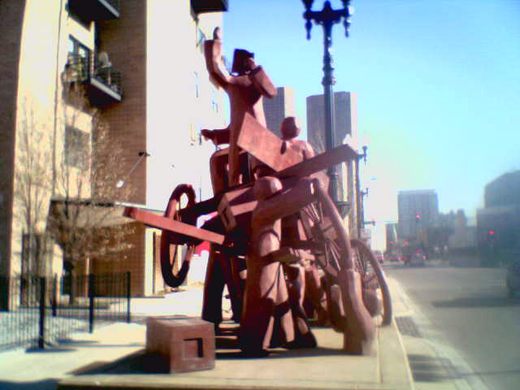

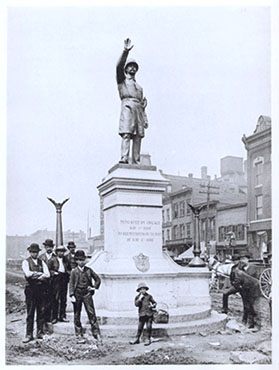

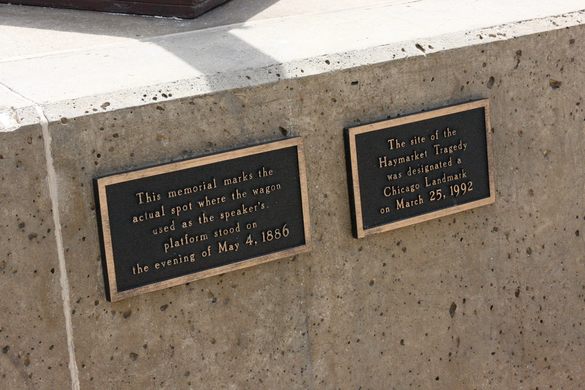

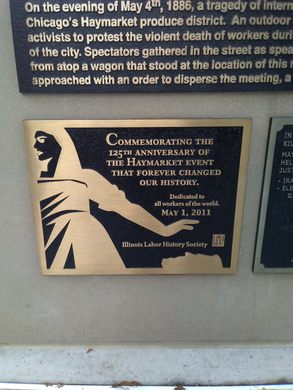










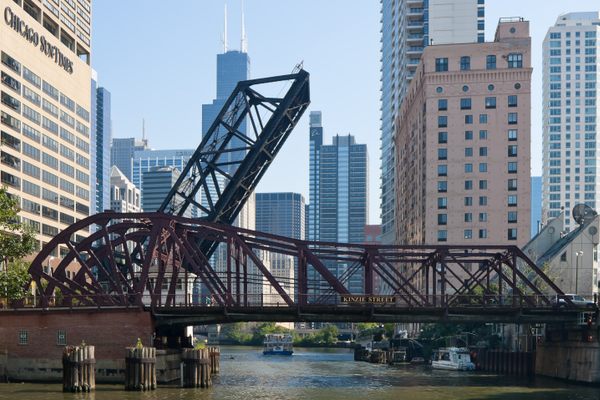
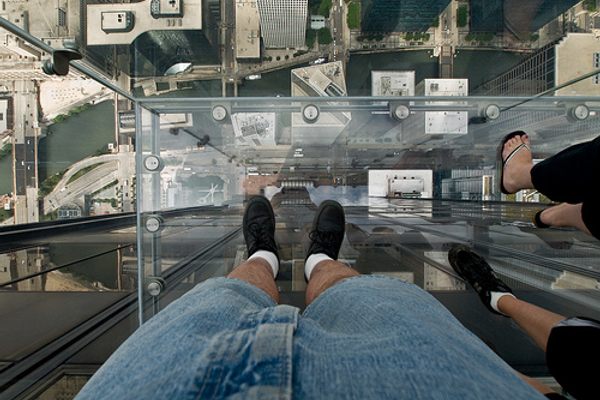

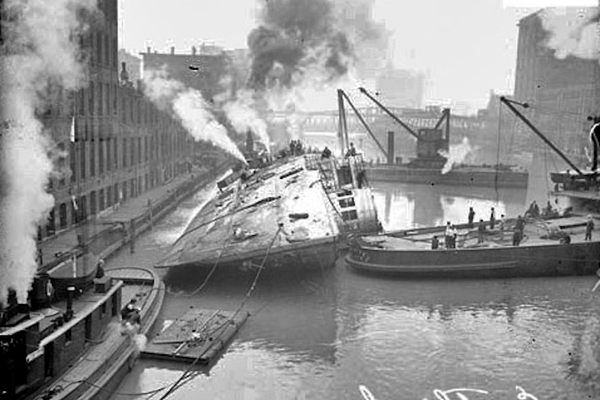





Follow us on Twitter to get the latest on the world's hidden wonders.
Like us on Facebook to get the latest on the world's hidden wonders.
Follow us on Twitter Like us on Facebook